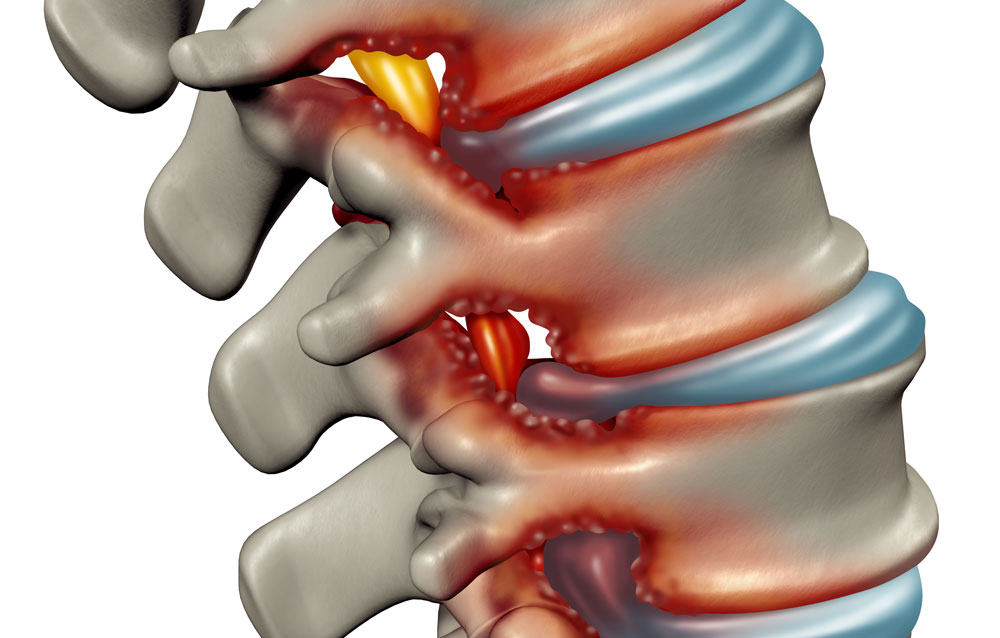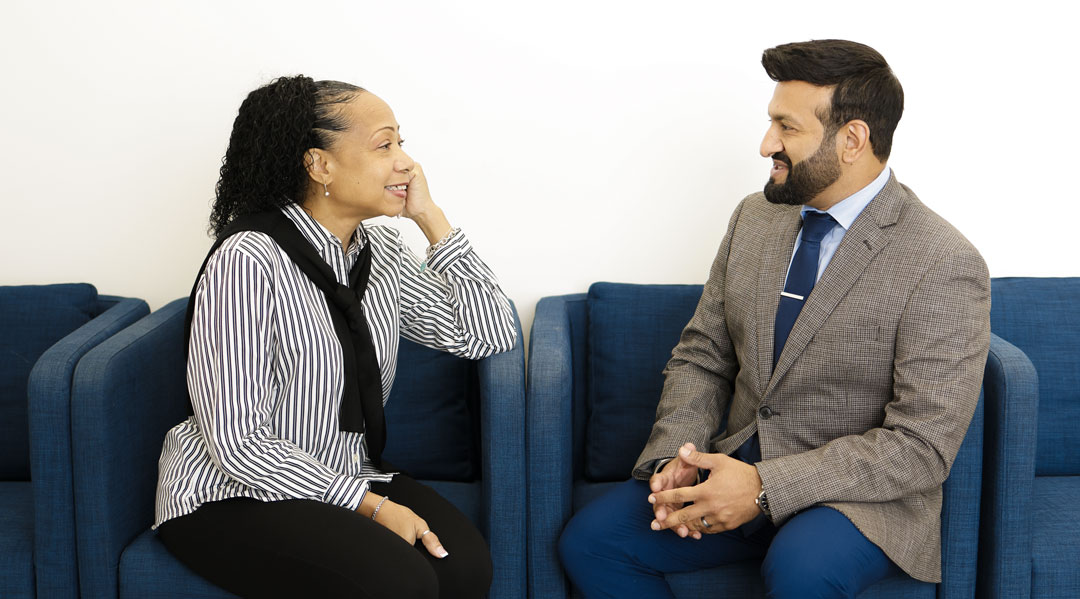Common Symptoms of Spinal Stenosis
According to the CDC, 39.0% of adults suffered back pain, 36.5% experienced lower-limb pain, and 30.7% had upper-limb pain within a 3-month span in 2019. While many people are all too familiar with back pain, fewer have heard about spinal stenosis. However, this condition is much more common than you may believe. Please continue reading to learn about spinal stenosis, its symptoms, and our recommended treatment plans.

What is Spinal Stenosis?
There are two types of spinal stenosis: cervical spinal stenosis and lumbar spinal stenosis. Cervical spinal stenosis occurs around the neck, and lumbar spinal stenosis appears in the lower back. However, both appear when the spinal canal becomes too narrow due to inflammation and swelling. These conditions compress the spine and can lead to excessive, long-term discomfort.
Common Symptoms of Spinal Stenosis
According to the CDC, 39.0% of adults suffered back pain, 36.5% experienced lower-limb pain, and 30.7% had upper-limb pain within a 3-month span in 2019. While many people are all too familiar with back pain, fewer have heard about spinal stenosis. However, this condition is much more common than you may believe. Please continue reading to learn about spinal stenosis, its symptoms, and our recommended treatment plans.

What is Spinal Stenosis?
There are two types of spinal stenosis: cervical spinal stenosis and lumbar spinal stenosis. Cervical spinal stenosis occurs around the neck, and lumbar spinal stenosis appears in the lower back. However, both appear when the spinal canal becomes too narrow due to inflammation and swelling. These conditions compress the spine and can lead to excessive, long-term discomfort.
WHAT CAUSES SPINAL STENOSIS
While there is no definitive cause of spinal stenosis, there are various reasons why someone may experience it. Unfortunately, some people are born with a narrow spinal canal, which can cause even minor swelling to feel uncomfortable. While this is not life-threatening, those predisposed to spinal stenosis may need to pay closer attention to the health of their spine to avoid unwanted back pain.
Many people also develop spinal stenosis as a result of an injury. Herniated discs, bone spurs, and unexpected trauma can cause premature wear and tear on your spine and cause excessive swelling within the canal. These injuries can feel extremely uncomfortable. However, many people find relief with the proper medical support and guidance.

Lastly, one of the most common causes of spinal stenosis is age. While anyone can experience this condition, women are especially susceptible to age-related spinal stenosis. We use our spine and back muscles daily, and as we age, they degenerate over time. Lifting heavy boxes, slouching in chairs, and everyday wear and tear can often catch up to us and cause this condition to flair up.
HOW CAN I IDENTIFY SPINAL STENOSIS?
Do you think you have spinal stenosis? It can be challenging to differentiate it from other common back problems. However, spinal stenosis has various symptoms to help you identify its presence.
HERE ARE SIX COMMON WARNING SIGNS OF SPINAL STENOSIS.
- Radiating Pain
One of the most common signs of spinal stenosis is radiating pain. Those suffering from lumbar spinal stenosis will feel discomfort starting in the lower back, and it can radiate throughout the legs and down into the feet. Otherwise known as sciatica, this leg pain can make walking, adjusting your lower back, and picking up heavy items extremely uncomfortable.
Those suffering from cervical spinal stenosis will feel discomfort between their shoulder blades, and the pain will radiate throughout the neck, arms, and hands. This upper body pain can make it difficult to move freely and perform daily functions such as driving, picking up items, and typing.
- Numbness
People may notice a numb, tingling sensation in all the same areas they experience pain. While they may feel radiating pain one day, they might feel numb the next. If you are suffering from excessive numbness, please take a seat to ensure you do not fall over and hurt yourself! Please give AK Pain & Spine Center a call to begin discussing your treatment options. Don’t let unwanted numbness hold you back from doing the things you love!
- Foot Complications
Spinal stenosis can also cause “foot drop,” which causes people to drag their toes due to a lack of sensation and mobility. Foot drop makes you more susceptible to tripping, and you may experience foot pain as the numbness wears off. As you walk, pay close attention to the amount of tension you place on your feet. If you notice your foot slapping down or have trouble lifting it, you may be experiencing a foot drop due to spinal stenosis.
- Lack of Bladder Control
Some people suffering from spinal stenosis will even lose control over their bladders due to increased numbness around their hips and pelvis. This symptom can feel embarrassing and uncomfortable, but it is a clear sign that it is time to seek professional assistance.
- Lack of Bowel Control
Some patients will also lose proper control over their bowels. While this only happens in extreme cases, we recommend seeing a medical professional if excessive numbness significantly affects your regular functions. Our team can help you identify if spinal stenosis is the culprit and help you return to a healthy, comfortable lifestyle.
- Relief While Sitting & Bending Forward
If you notice your back pain decreasing when you sit down or bend forward, this is a sign you are dealing with spinal stenosis. While there is no better feeling than finding relief from chronic pain, these adjustments can only help temporarily. The only way to experience long-term relief is to seek professional support!
Spinal Stenosis in Houston, Texas

Don’t settle for surgery to treat your spinal stenosis. Our team and AK Pain & Spine Center will walk you through various non-surgical and minimally invasive options so you can find relief without significant downtime or extensive procedures. Nobody in pain should wait, and we offer same-day appointments to ensure you receive the support you deserve. Please click the button below to book an appointment!
